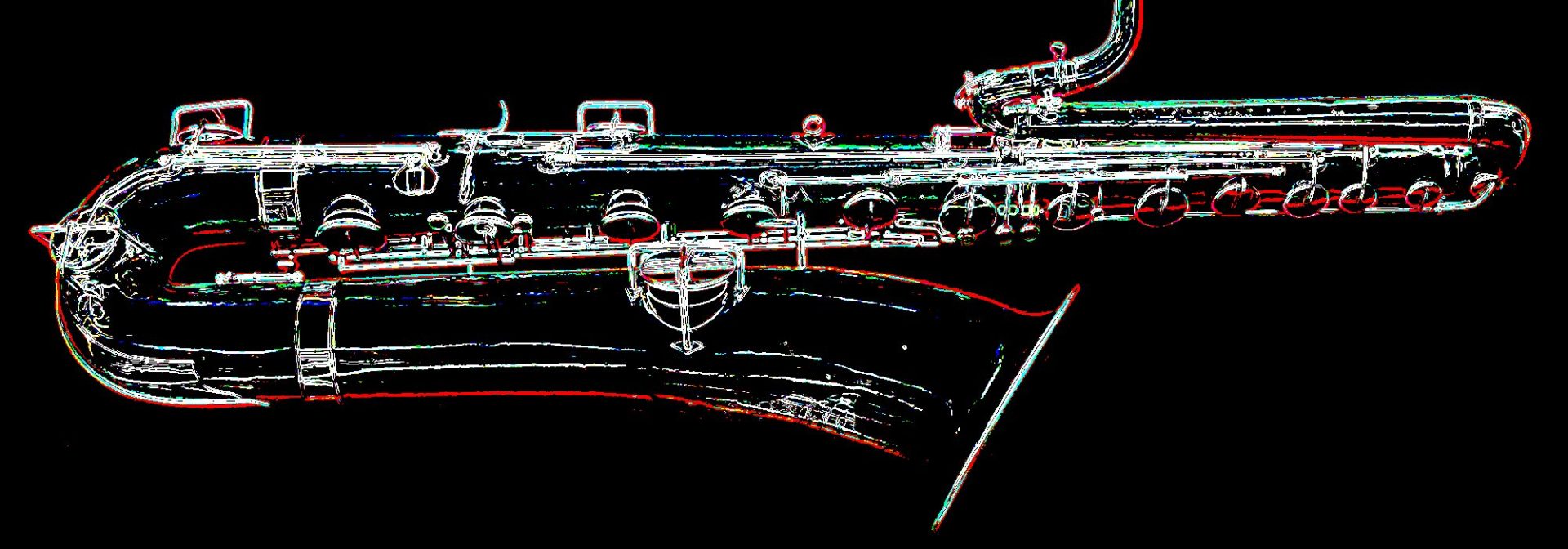One thing I love to do is check out what people are posting in Flickr under the tags: saxophone and sax. More often than not the photos are crap, or don’t contain saxophones at all. Every once in a while however, I happen across an incredible image, like today’s by Neil Moralee titled, The mechanics of the music.
The mechanics of the music.
Music Shop window shot, Cockermouth Cumbria, UK.
Photography by: Neil Moralee Source: Flickr
Besides being a fantastic photo, what fascinated me about this shot was that it was taken through a store window. I am wondering how this was possible.
What’s even more intriguing to me is that this shot was taken with the same model camera that I use for my light box photography: a Panasonic Lumix LX-7. Obviously Moralee used a tripod, but I’m wondering what he did with his processing either in-camera, or with his Adobe Photoshop Lightroom software, to produce such an amazing image. (I’ve optimized it slightly for my website, so check it out on Flickr to see the true image.)
Sure my saxophone shots are nice enough, but my artsy sax shots are nothing like what Moralee shoots.
Neil Moralee’s, The mechanics of the music, reminds me of the kind of photos I’ve seen taken by my former keyboard player, multi-award winning photographer Jason Brown. Jason’s photos are some of the most brilliant photographs that I have ever seen. He can make a shot of gum stuck to the sidewalk look fantastically artistic—and that’s no hyperbole.
I know I will never have the photographic genius of Jason, but I would gladly settle for being able to take photos that are truly tack sharp. Maybe one day I’ll get there. It’s clearly still a work in progress. ![]()




Yes it’s my photograph, it was hand held, I used my black coat and put the camera close to the glass. the LX7 was set on intelligent auto.
In lightroom I pushed the contrast up and added a darkened edge.
Glad you like the shot.
Neil
Stop down, use a tripod, get close (hopefully right up against the glass so there is no reflection), use a wide-angle lens, though not too close or too wide. You don’t want to be reflected and you don’t want visible distortion.
If you can’t get right up against the glass, putting a hood between the front of the lens and the glass can do the same job. Failing that, you can cut most (though not all) of the reflection from glass with a polarizing filter.
Hi there Mal-2. I was hoping you’d chime in. Yup, I thought of all of things too. Trouble is, the Lumix LX-7 is not an DSLR. I don’t think you can attach a filter to the lens either.
I had a friend who was a professional photographer in the military, look at this photo. She also happens to be quite familiar with the Lumix LX-7, and she couldn’t explain the photo either, given the settings provided on Flickr. Very strange… I’m almost inclined to drop Neil Moralee a note and ask him about it. Yes, I’m that curious. Perhaps there’s a simple explanation that I’m overlooking.
Small lenses and image sensors actually improve depth of field at a given aperture (for a given angle of view). He could have been shooting at f/16 and gotten the DOF of an SLR at f/32, without the diffraction of an aperture that small. It’s one of the few technical advantages of a small format camera. Also, you CAN attach filters to that lens.
As for the lack of a reflection, the answer may indeed turn out to be something simple, like someone holding up a trenchcoat or a large umbrella behind him to block the light. It doesn’t look like it though, you can see his reflection (very small) in the beads on the ends of the key posts. So… I don’t know. It could be processed from multiple shots, but I wouldn’t claim that it is.
go on… Your photos are pretty super yourself Helen.
Good find. This may be one of the most beautiful sax photos I’ve ever seen!
A friend of mine took a beautiful photo of my pink sax (attached). The thing was barely playable, but it sure was photogenic.